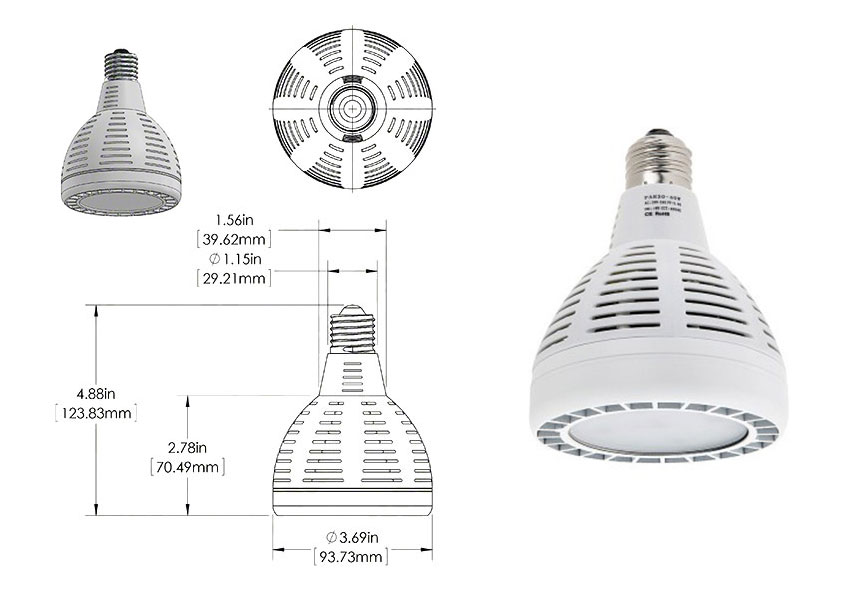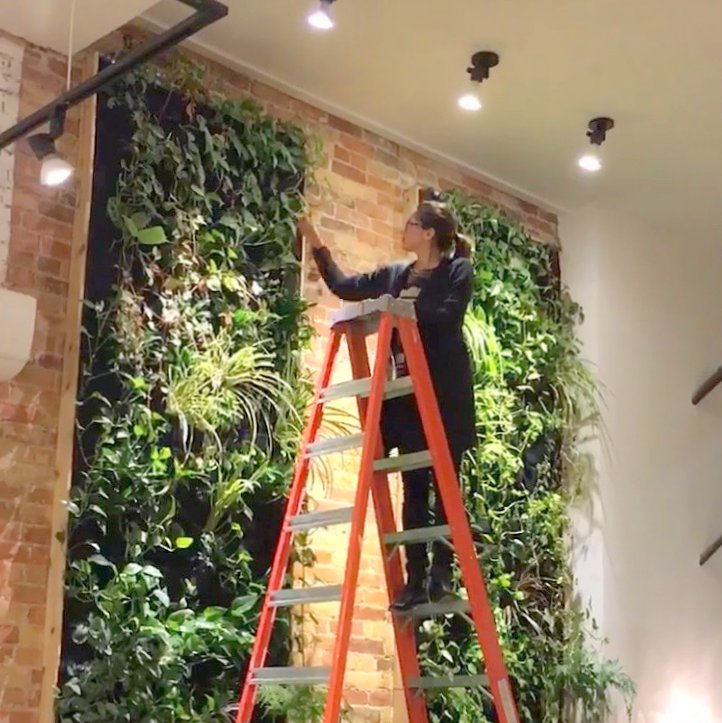Living Wall Lighting Guide
Plants Need Light
Natural light outdoors is the ideal source for growing plants.
Daylight produces 10,000 foot candles of light. This is perfect for herbs, vegetables, grasses, succulents and many other plants that thrive in full sun or even part shade.
For indoors we select low light tropical plants that are native to the forest floor beneath the tree canopy receiving 250 foot candles and temperatures around 70 degrees. These conditions are typical to our interior spaces. What we consider 'house plants' are suitable to our optimal living conditions as well.
Low light tropical plants typically like bright indirect light however too much light or direct sun will burn their foliage. In places where there is not quite enough light supplemental lighting will be required.
Choosing the right plants for your location is very important.
See Choosing Plants
Florafelt Vertical Garden by Joanna Wong and Durkin Construction. Cole Valley Residence, San Francisco.
Florafelt Vertical Garden by Brandon Pruett, Living Green Design. Emeryville Marketplace Living Wall.
Natural Light
Free Light Energy From The Sun
Ideal lighting would come from a skylight above or window across from the vertical garden. It costs nothing and is the most ecological solution. Diffused light near a large window becomes ideal conditions for low light tropical plants.
It may be that a beam of light passes over the vertical garden for a couple of hours each day.
Know your Light
Get A Light Meter
To determine light levels get a light meter. Light levels are measured in Foot Candles. Low light tropical plants will survive with 150 - 250 foot candles of lighting and will need 8-10 hours each day.
Hydrofarm Digital Light Meter - About $40
The Color of Light
Kelvin Color
Choosing the color mostly affects how we will view the plants. Warmer colors recreate summer light that encourages blooming. Bluer light will help plants develop their foliage. Vertical gardens are typically for enjoying their beauty therefore 4000K is a balanced warm daylight that looks best with plants.
Plants Need a Broad Spectrum of Light
Evolved to Love the Sun
Plants have evolved in nature to optimize their photosynthesis at the ends of the spectrum.
In plants, Ultraviolet (UV) blue light are required for green vegetative growth while red wavelengths aid in their flowering and fruiting phases.
For vertical gardens it is desirable to provide plants with a wide spectrum of light so we can also enjoy the visible beauty of plants.
High Power LED Bulbs
These incredible super bright LEDs produce 3000 Lumens with in a 25% flood. Perfect for concentrating light energy to the wall. They only use 36W and have cooling fans built in.
Specs: Par 30 - 36 watt - 25 degree - 4000 kelvin
Adjustable Gimbal Recessed Trim
Mount your lighting in your ceiling for a perfect finish. Use an adjustable recessed trim to direct and distribute the light energy onto the living wall. This exact trim is the perfect fit for our High Power LED grow light bulbs.
30 PAR Eyeball recessed trim available through Amazon. here
Florafelt Vertical Garden by Hande Ersoy. Untitled by Flaunt Boutique, Toronto.
Built in LED Cooling Fan
There's a cooling fan in the bulb. It makes a subtle fan sound. It's good that it blows warm dry air at your plant wall. This helps to improve circulation and to help dry out the wall between waterings which is ideal for plants.
This also improves the wall's ability to clean the air. VOC's are absorbed by the microbiology at the plants roots. The open felt design let's the air into this biologically active area. Air movement from the light's fans help to increase its air cleaning efficiency.
Contact us directly to order. 770-406-6330.
How Many Bulbs Should I Use?
Size of Wall (in square feet) X Desired Foot Candles = Total Lumens
Total Lumens / Lumens Per Bulb = Number of Bulbs
400 foot candles is a good place to start. This will be good for most low light houseplants.
Example:
A wall that's 10 feet wide by 8 feet tall for which you want 400 foot candles. Here are the calcs.
80 sf x 400 foot candles = 32,000 lumens / 3000 lumens per bulb = 10 bulbs.
Focused Light Energy
Spot/Flood type bulbs are best to focus the usable lumens to the living wall. These LED bulbs come in a 36 degree spot which is ideal. Consider an even narrower spot for further distances and a wide flood when they are very close. Combine both wide and spots on the same track to better reach the bottom of a wall with spot fixtures and use wide floods that are directed near the top of the wall.
Locate lighting above the living wall about 3 feet back then focus the beams onto your plants.
Florafelt vertical garden by FireDean Schilling, The Brooklyn Garden Club, Atrium DUMBO.
Recirc Interior Lighting
Florafelt Recirc-33 Vertical Garden Lighting Guide










